How to Draw a Police Car
In this ten-step drawing tutorial, we will to show you how to draw a police car using the example of a Ford Crown Victoria.
Although it holds a special status, this car doesn’t look much different from an ordinary vehicle. The key feature that sets a police car apart is the presence of flashing lights.
Another distinctive element is the lettering on the body. Police cars may also include extra details such as bullbars, spotlights, or other auxiliary equipment.
If you ignore these features, a police car is drawn almost the same way as any other sedan.
To make sure your drawing is clearly recognizable as a police car, we’ll use the Ford Crown Victoria as an example – the most widely used police car in the United States for many years.
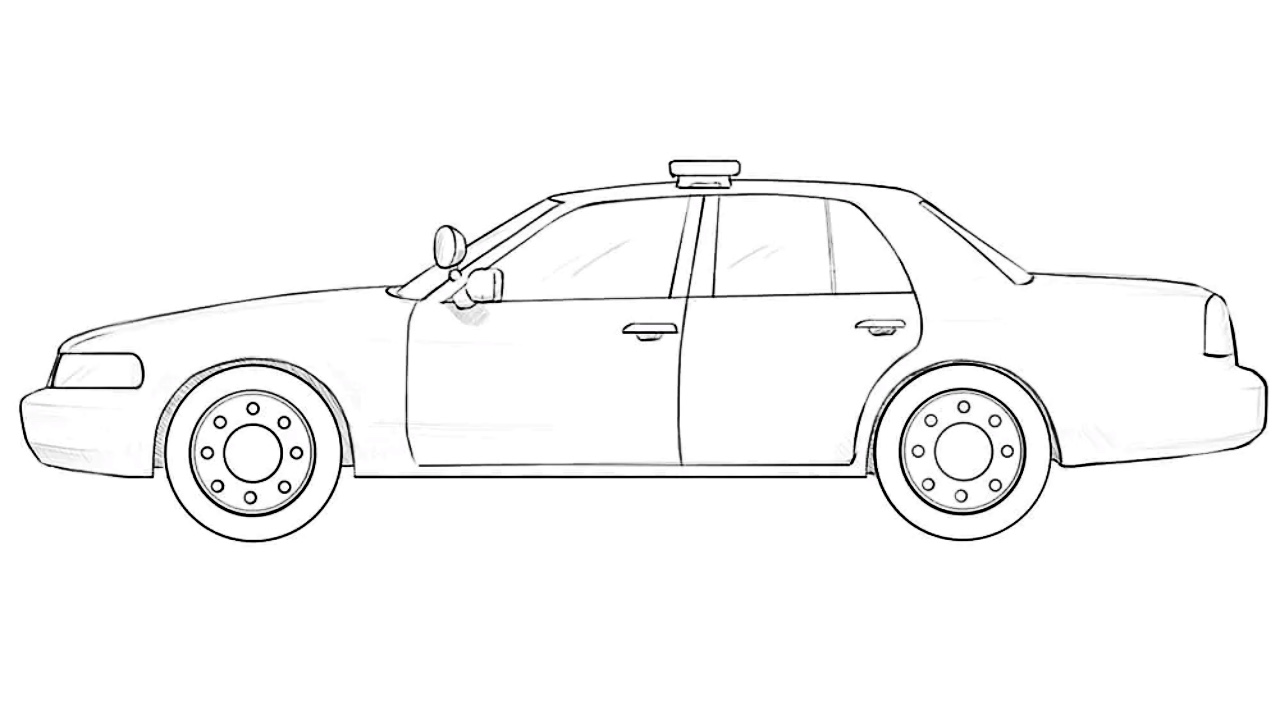
How to draw a police car: step-by-step tutorial
Step 1 – Lightly sketch the Crown Victoria silhouette
Outline the general silhouette of the Ford Crown Victoria. Use light, long lines so corrections can be made easily. First create the bottom of the car as an elongated rectangle, then add the top edge as a smooth curve above. Mark only the main shape of the sedan. The body of the police vehicle should looks elongated.
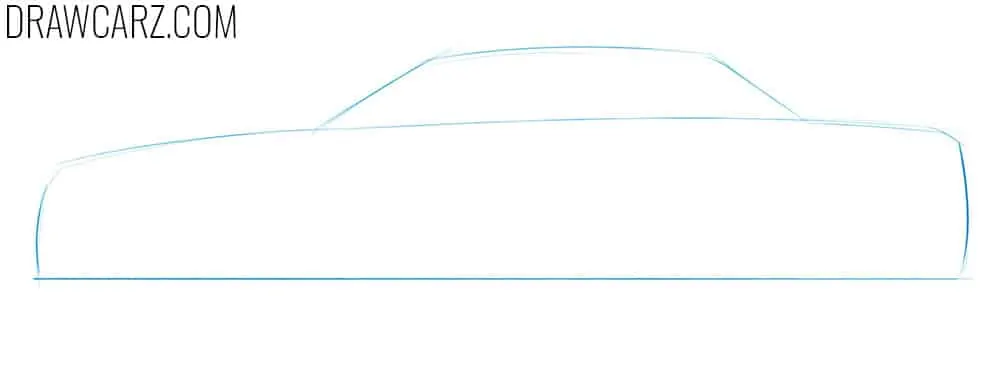
Step 2 – Draw the police car bumpers and arches
Depict the front and rear bumpers of the law enforcement vehicle, which should extend slightly beyond the car body. Add the front and rear arches as semicircles. Try to make the arches symmetrical. The bumpers of the vehicle should appear strong and bulky.
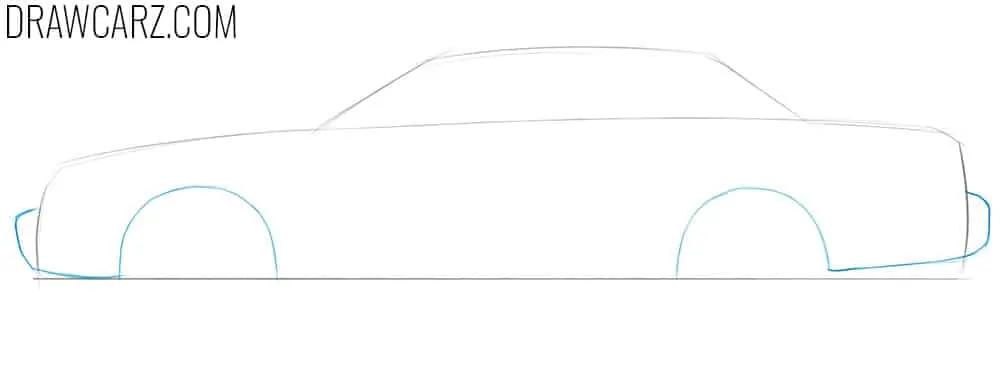
Step 3 – Add the front and end windows and lights
Correct the hood outline with clearer and darker strokes. Sketch the visible parts of the headlights and taillights. Add the outlines of the front and rear windows to the silhouette. You may also lightly indicate the grille placement in front.
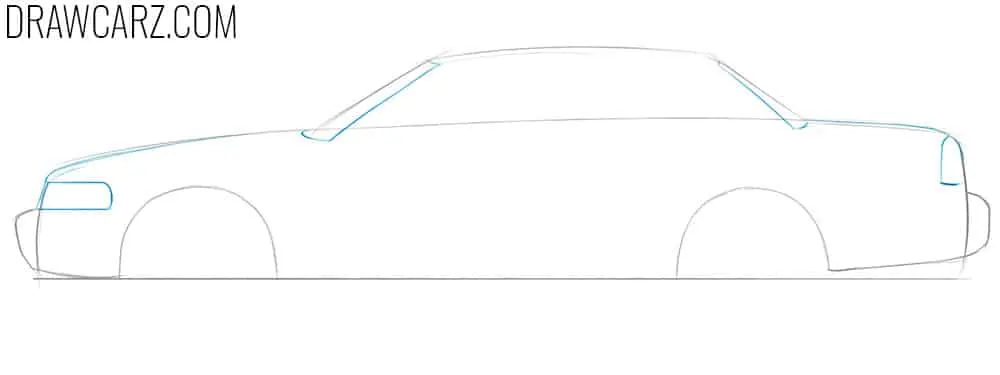
Step 4 – Draw out the police car’s greenhouse
Outline the side window frame with a central pillar dividing the front and rear glass. This strong frame supports the heavy-duty construction typical of patrol vehicles. Above the windows, leave space for the light bar placement.
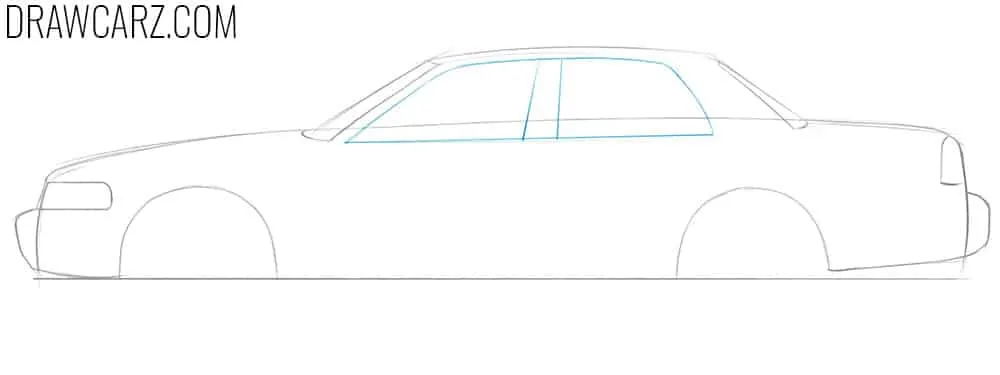
Step 5 – Sketch the Crown Victoria doors
Draw the front and rear doors of the police car, trying to make them large and rectangular. Police cars require wide openings to allow quick entry and exit during emergencies. Add the basic separation line between the doors on the side pillar.
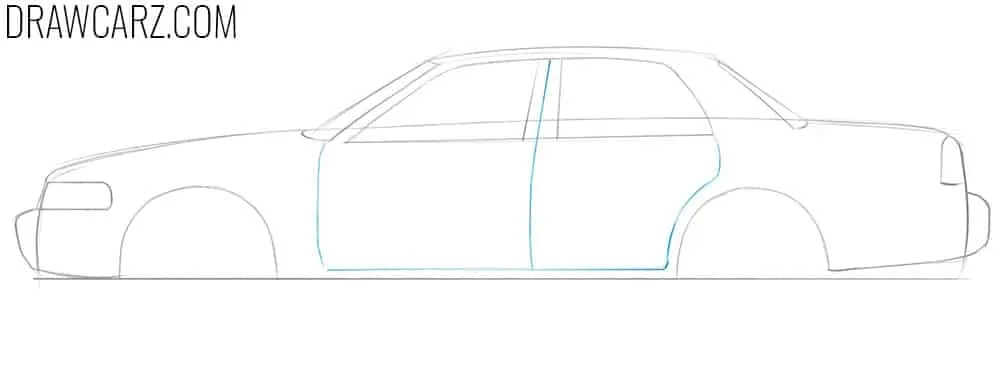
Step 6 – Add the auxiliary lamp and mirror
Sketch the rearview mirror at the front corner of the window frame. Next to it, add the auxiliary lamp used by officers during patrols at night. The lamp can be drawn as a small rounded shape connected to the pillar. You can adjust the shape and size of this lamp, depending on the specific type of the patrol vehicle you draw.
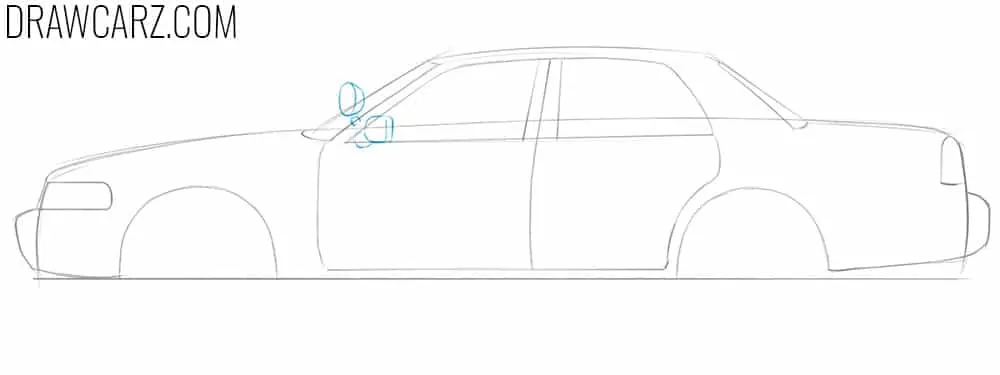
Step 7 – Draw the police car flashing roof lights
On top of the roof, above the central pillar, add the police light bar. Depict it from the side as a flat, wide shape that stands out against the roofline. This turns the drawing into a recognizable police car. The light bar should be centered, as it’s the key element of any patrol car silhouette. Also, add the handles on the doors and the thin dividing line at the rear window.
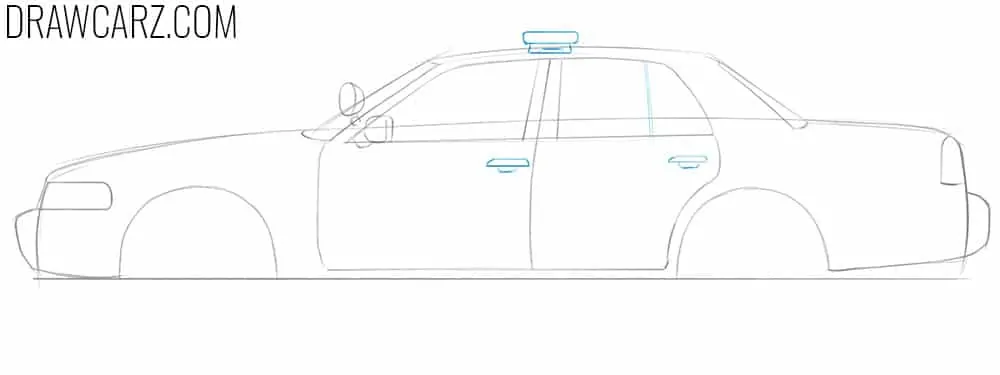
Step 8 – Illustrate the police car tires and rims
Erase construction lines from the body and carefully draw the wheels. Police cars usually have reinforced tires, so make them look slightly thicker. Inside the tires, add the rim shapes, trying to make them symmetrical.
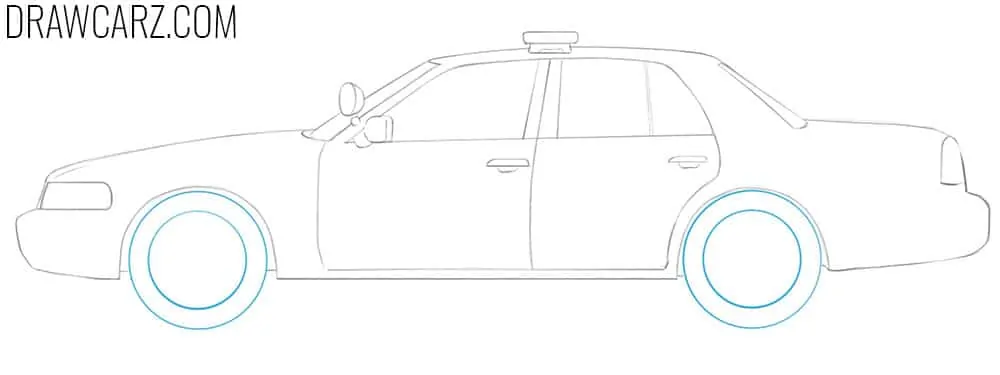
Step 9 – Detail the Crown Victoria rims
Depict a central hub inside each rim, then place smaller circles evenly around it for a simplified pattern. These sturdy, simple rims are common on fleet service vehicles. If desired, you can make the rims more detailed, but this simple design works better for such cars.
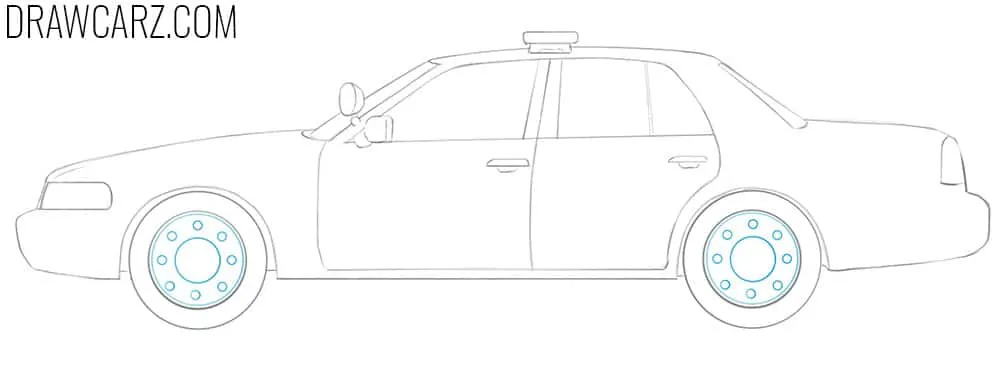
Step 10 – Finish your police Crown Victoria drawing
Shade the darkest areas, starting with the wheel arches, underbody, and glass. Then add lighter halftones and reflections. Place glare on the windows to illustrate patrol lights reflecting at night. For authenticity, you can add the word “POLICE” on the doors, a badge on the hood, or a bullbar in front.
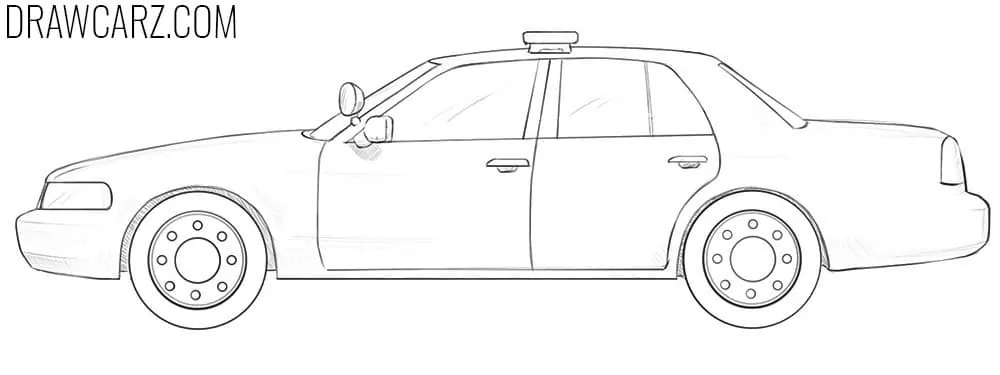
Advanced practice in drawing police and service vehicles
As mentioned at the beginning of this lesson, we used the Ford Crown Victoria as an example to illustrate an American police car from the 1990s.
But police vehicles are not limited to the Crown Victoria – different brands and models are used as law enforcement cars all over the world.
To draw any other police vehicle, simply apply the details and features of a police car that you learned here to the model you want to depict.
For instance, Ford trucks are often adapted as police vehicles. You can visit our tutorial on how to draw a Ford truck and combine it with the techniques from this lesson to create a police truck.
It’s also worth noting that many other emergency services and organizations use vehicles with recognizable designs.
For example, you can check out our ambulance drawing tutorial to learn how to sketch another essential vehicle for any community.
If you found this police car tutorial useful, don’t miss out on future lessons. Subscribe to our mailing list and get new step-by-step guides delivered straight to your email inbox.
We regularly share tutorials on drawing cars of every type – from sedans and trucks to emergency vehicles and supercars.
Sharing also helps our community grow. Send this guide to a friend, post it on social media, or forward the email version once you’re subscribed.
The more people practice together, the more unique and creative results everyone can achieve.






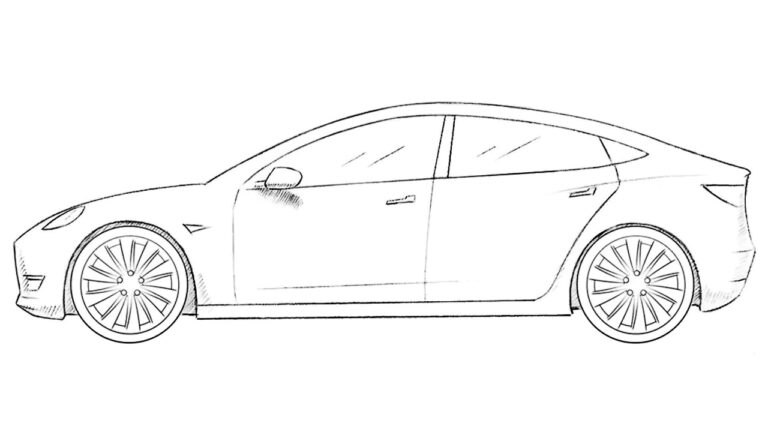
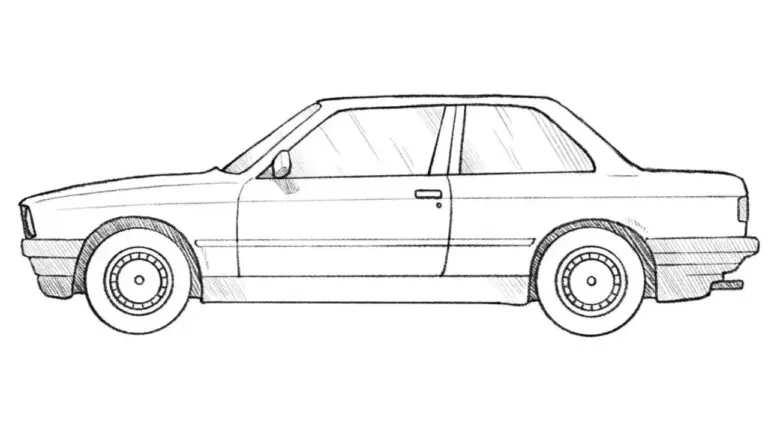
this is the best app ever
Thanks, glad you enjoyed using our website, it means a lot